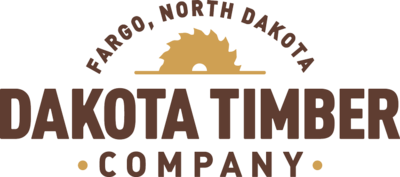What is Urban Lumber?
Since we started building communities across our nation, we also have been planting trees along streets, in parks, and our own backyards to provide natural splendor in our lives. Over years and decades, these trees occasionally perish, are removed, and most often are then replaced with new trees.
So what happens to these old champion trees that lined our streets for all these years? Well, for the last century, we have been cutting them down and bringing them to the landfill where they get chipped or burned. This unfortunate end to these amazing trees that shaded our lawns for decades is not quite the end anyone would have hoped for...so we thought, “Let’s give this wood another chance at life!”
By saving the larger trunks from these trees, we have found that we can mill them into boards and produce many traditional wood products from them. In fact the quality of “Urban” hardwood is much more unique than what would traditionally be found in the commodity hardwood market.
More unique grain textures, colors, and defects actually add to the beauty of this material. AND There is no limit to how we can use Urban lumber as it is processed the same way as we would process normal lumber that is logged from forest settings.
Processing Urban Lumber
With many more urban lumber companies popping up across the country, this supply of urban wood is actually making a sizable impact in the hardwood industry.
In our communities across North Dakota alone, there is enough wood coming down from our city streets to produce well over 1 million board feet of lumber each year. That’s a LOT of wood and a LOT of potential to make a big impact in our industry. Plus, let’s not forget that this wood normally would have been chipped or burned!
Sounds pretty great right? Well, it is! But processing urban lumber is not for the faint of heart. Much more additional time goes into sourcing, hauling, and prepping the logs before they even get to the sawmill. Once at the sawmill, it is a whole other ballgame because 1 out of 2 urban salvaged logs has metal in it. Metal? Yep, metal. You know, from that tree house you built or that bird house you nailed on your tree or the “Garage Sale” sign you nailed onto the tree on the street corner.
All of that contact with humans over the years left its mark. And the evidence is in the log, in the form of sawmill blade-destroying metal fragments. So you can imagine the cost of blades alone is quite insane; but that is a cost we are willing to pay to be able to salvage this amazing material.
Urban Lumber Products
All in all, Urban Lumber is pretty cool. A lot of history, a lot of character and a lot of hard work goes into every board produced. One of the best parts is that although this is “recycled” wood we actually are able to produce some of the most contemporary and high-end wood products from this material. So that’s a win in our book.
We hope you take a minute to consider urban wood for your next project--you’ll be glad you did!
Some of the products that we make using urban lumber include mantels, floating shelves, beams, shiplap and furniture.

